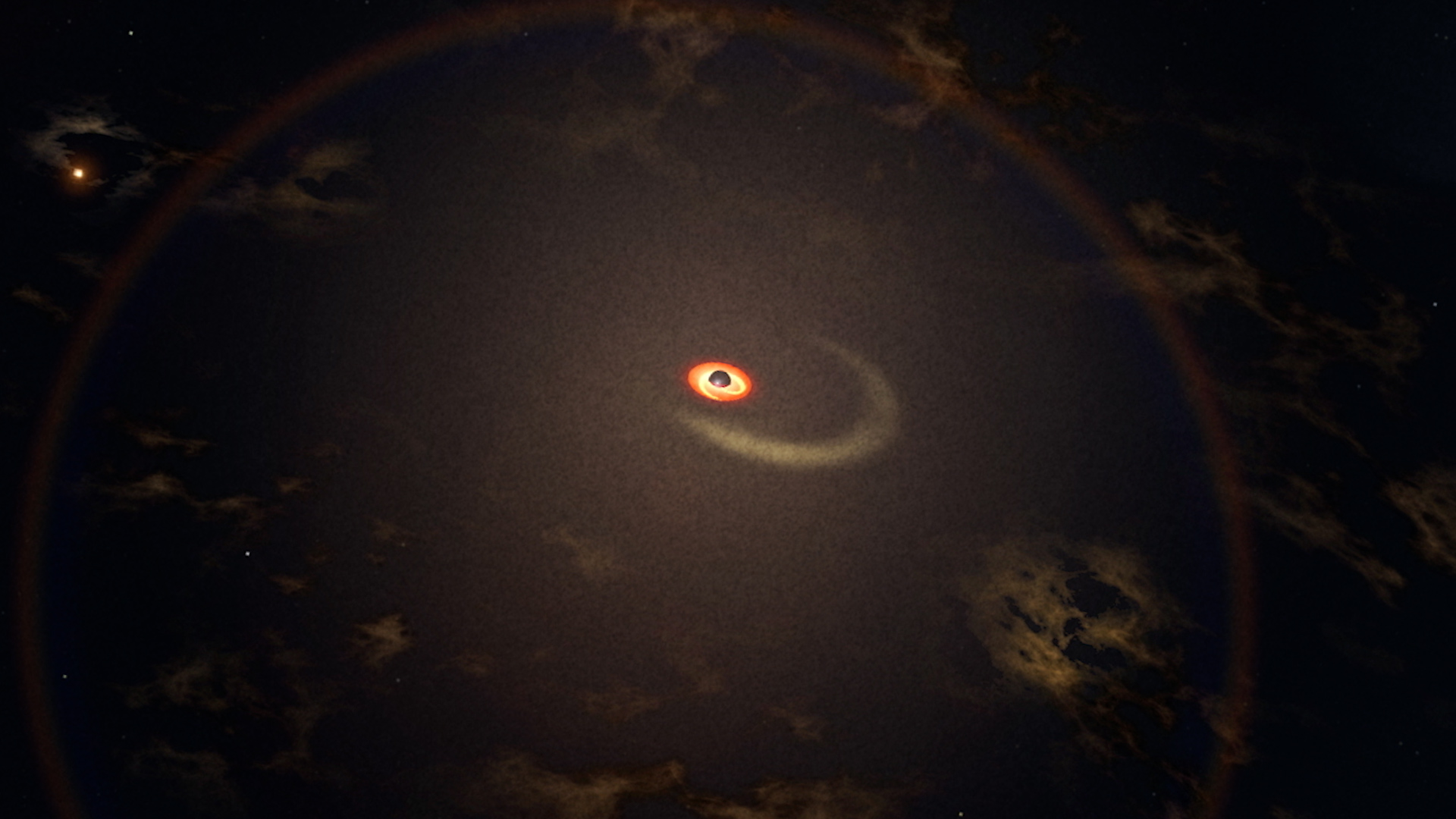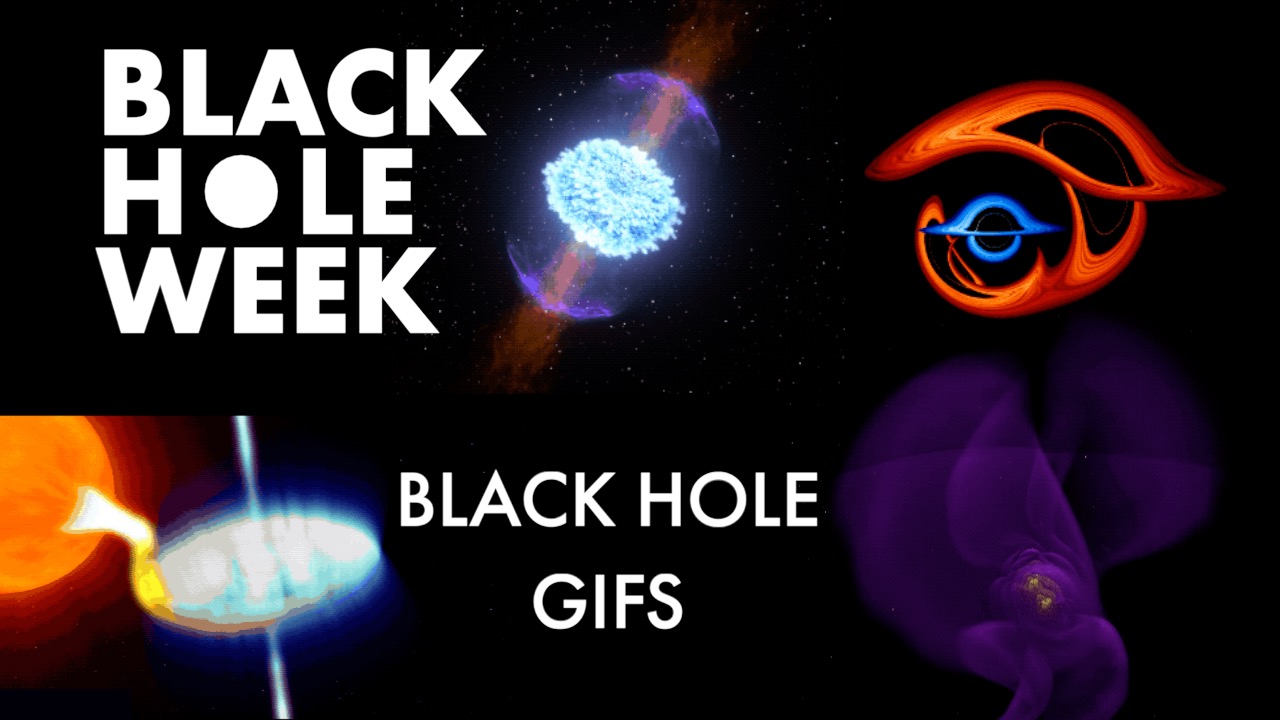Swift Links Neutrino to Star-destroying Black Hole
Watch how a monster black hole ripping apart a star may have launched a ghost particle toward Earth. Astronomers have long predicted that tidal disruption events could produce high-energy neutrinos, nearly massless particles from outside our galaxy traveling close to the speed of light. One recent event, named AT2019dsg, provides the first proof this prediction is true but has challenged scientists’ assumptions of where and when these elusive particles might form during these destructive outbursts.
Credit: NASA’s Goddard Space Flight Center
Music: "Diagnostic Report" from Universal Production Music
Complete transcript available.
For only the second time, astronomers have linked an elusive particle called a high-energy neutrino to an object outside our galaxy. Using ground- and space-based facilities, including NASA’s Neil Gehrels Swift Observatory, they traced the neutrino to a black hole tearing apart a star, a rare cataclysmic occurrence called a tidal disruption event.
Neutrinos are fundamental particles that far outnumber all the atoms in the universe but rarely interact with other matter. Astrophysicists are particularly interested in high-energy neutrinos, which have energies up to 1,000 times greater than those produced by the most powerful particle colliders on Earth. They think the most extreme events in the universe, like violent galactic outbursts, accelerate particles to nearly the speed of light. Those particles then collide with light or other particles to generate high-energy neutrinos. The first confirmed high-energy neutrino source, announced in 2018, was a type of active galaxy called a blazar.
Tidal disruption events occur when an unlucky star strays too close to a black hole. Gravitational forces create intense tides that break the star apart into a stream of gas. The trailing part of the stream escapes the system, while the leading part swings back around, surrounding the black hole with a disk of debris. In some cases, the black hole launches fast-moving particle jets. Scientists hypothesized that tidal disruptions would produce high-energy neutrinos within such particle jets. They also expected the events would produce neutrinos early in their evolution, at peak brightness, whatever the particles’ production process.
Tidal disruption event AT2019dsg was discovered on April 9, 2019, by the Zwicky Transient Facility (ZTF), a robotic camera at Caltech’s Palomar Observatory in Southern California. The event occurred over 690 million light-years away in a galaxy called 2MASX J20570298+1412165, located in the constellation Delphinus.
As part of a routine follow-up survey of tidal disruptions, scientists requested visible, ultraviolet, and X-ray observations with Swift. They also took X-ray measurements using the European Space Agency’s XMM-Newton satellite and radio measurements with facilities including the National Radio Astronomy Observatory’s Karl G. Jansky Very Large Array in Socorro, New Mexico, and the South African Radio Astronomy Observatory's MeerKAT telescope.
Peak brightness came and went in May. No clear jet appeared. According to theoretical predictions, AT2019dsg was looking like a poor neutrino candidate.
Then, on Oct. 1, 2019, the National Science Foundation’s IceCube Neutrino Observatory at the Amundsen-Scott South Pole Station in Antarctica detected a high-energy neutrino called IC191001A and backtracked along its trajectory to a location in the sky. About seven hours later, ZTF noted that this same patch of sky included AT2019dsg. Astronomers think there is only one chance in 500 that the tidal disruption is not the neutrino’s source. Because the detection came about five months after the event reached peak brightness, it raises questions about when and how these occurrences produce neutrinos.
This animation illustrates what happens when an unlucky star strays too close to a monster black hole. Gravitational forces create intense tides that break the star apart into a stream of gas. The trailing part of the stream escapes the system, while the leading part swings back around, surrounding the black hole with a disk of debris. This cataclysmic phenomenon is called a tidal disruption event.
Credit: NASA’s Goddard Space Flight Center/Chris Smith (USRA/GESTAR)
Eventually, the stellar debris settles into an accretion disk around the black hole, as illustrated here. Gravitational and frictional forces heat the material, producing visible, ultraviolet, and X-ray emissions.
Credit: NASA’s Goddard Space Flight Center/Chris Smith (USRA/GESTAR)

The Zwicky Transient Facility, a robotic camera at Caltech’s Palomar Observatory in Southern California, captured this snapshot containing tidal disruption event AT2019dsg (circled) on Oct. 19, 2019. The image was taken during the camera’s follow-up campaign that identified the event as a high-energy neutrino source.
This listing includes unmarked versions.
Credit: ZTF/Caltech Optical Observatories
For More Information
Credits
Please give credit for this item to:
NASA's Goddard Space Flight Center
-
Producer
- Chris Smith (USRA)
-
Science writer
- Jeanette Kazmierczak (University of Maryland College Park)
-
Animator
- Chris Smith (USRA)
-
Scientists
- Brad Cenko (NASA/GSFC)
- Robert Stein (DESY)
- Sjoert van Velzen (Leiden University)
Missions
This page is related to the following missions:Series
This page can be found in the following series:Related papers
Release date
This page was originally published on Monday, February 22, 2021.
This page was last updated on Wednesday, May 3, 2023 at 1:44 PM EDT.

